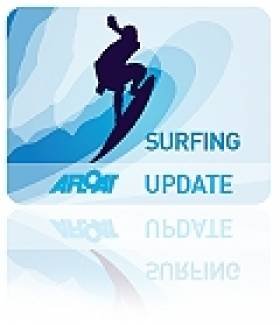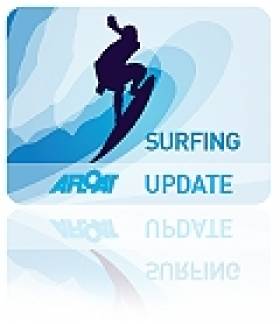Displaying items by tag: Tom Lowe
Irish Student's 'Street Surfing' Video Goes Viral
#Surfing - An Irish wave enthusiast's 'surfing' video on the streets of Manchester has gone viral.
As the Belfast Telegraph reports, Manchester University student Sean-Caio Dos Santos Corr from Derrylaughan made the clip for the craic after spotting traffic splashing barrel waves onto the pavement on a flooded street.
Waiting for another downpour, Corr and his friend Christian Berger pounced with surfboard, camera and Bermuda shorts at the ready – and the results caught the interest of online viewers across Europe.
"We didn't even intend to take a camera with us we just grabbed it on the way out of the house for a laugh," says Corr.
"And now it's quite funny that people are actually interested in seeing eejits on the side of the road getting splashed in the face by a puddle."
In other surfing news, one of Cornwall's most prominent big-wave surfers has set up shop on Ireland's Wild Atlantic Way to be in prime position for the giant walls of water the current stormy season is bound to throw up.
Tom Lowe tells the Western Morning News how chasing the biggest and best waves for a living often means sleeping on friends' floors – and jetting around the world at a moment's notice - while keeping in peak physical and mental condition
“It’s a complete package," he says. "Your heart has to be in it, your mind has to be in it and you have to be physically stable.”
Cornish Surf Pro Rides Ireland's Immense Winter Waves
#Surfing - Cornish surfing pro Tom Lowe took on Ireland's incredible winter waves, and has the video to prove it!
Shot by fellow Cornwall native Mickey Smith, the clip - via Surf Around Ireland - shows Lowe paddling into some of the biggest swells the west coast has to offer.
Best Ever Surfing Winter for Ferg and Tom
Surfing magazine MagicSeaweed recently caught up with waveriders Fergal Smith and Tom Lowe to get the lowdown on winter surfing on the Emerald Isle.
The pair describe how flat surf after last November's 'big freeze' gave way to a run of big waves from January to March. For UK pro Lowe in particular it was his best ever season - but also one that left him spent.
"The finisher for me was that Mully morning session [off Mullaghmore]," he told MagicSeaweed. "Ferg towed me into the best wave of my life that morning; sounds wet but I was drained emotionally and physically by it."
For 'Ferg' Smith, the highlight was the paddle session at the Pampa wave near Bundoran.
"I grew up surfing Pampa so I know the wave well but I have never surfed it as big and perfect at that," he said.
MagicSeaweed has more insights from Tom and Ferg HERE.































































